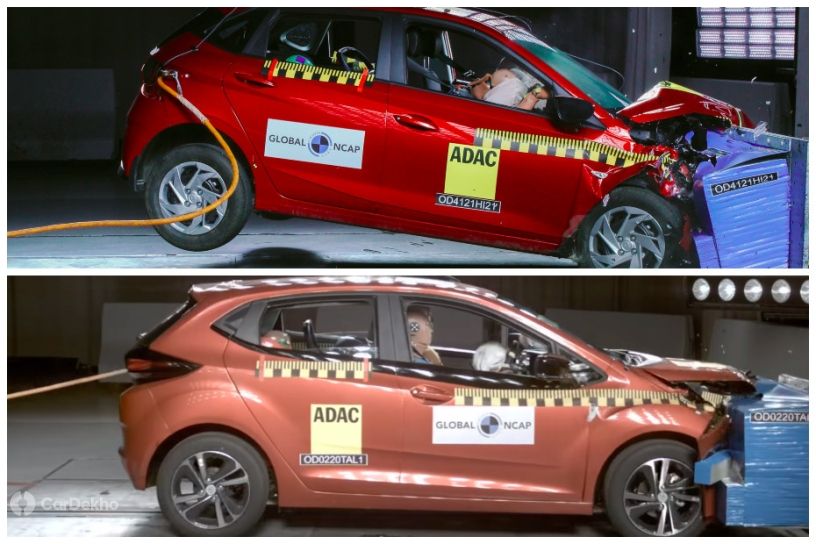Hyundai i20 vs Tata Altroz: Crash Test Ratings Compared
[ad_1]
We examine how each car fared in detail to understand how they got their respective scores

The Global NCAP crash test has become a commonly recognized means of assessing the safety of a new car in India. Its standard test is a frontal offset crash at a speed of 64kmph, and the ratings are assigned based on the car’s performance in that test. Thus, it seems fair to compare the results of two popular models from the same segment. It is worth noting that GNCAP tests only the base variant of each model with a standard set of safety features. Here we’ll be comparing the Hyundai i20 and Tata Altroz premium hatchbacks.
Overall Scores
We’ll start with the obvious difference between the GNCAP safety ratings of the i20 and the Altroz, their overall rating. The Tata scored five stars compared to the Hyundai’s three-star rating. Both come with dual front airbags as standard along with ABS, rear parking sensors and ISOFIX child seat anchorages.
Adult Occupant Safety
The Altroz scored 16.13 points out of 17 points for adult safety, and got five stars. In contrast, the i20 only scored 8.84 points for a three-star rating.
 Tata Altroz Adult Occupant Protection
Tata Altroz Adult Occupant Protection
The Tata hatchback showed adequate and good protection for both front passengers in the front-offset crash test, deserving its score. The i20 offered only weak to adequate protection for the driver and marginal protection to the thighs of both front passengers.
 Hyundai i20 Adult Occupant Protection
Hyundai i20 Adult Occupant Protection
Child Occupant Safety
Both hatchbacks earned three stars for child occupant safety, and the Altroz actually scored lower than the i20. The Tata got 29 points out of 49, while the Hyundai earned 36.89 points.
GNCAP mentions that the i20 offered poor protection to the neck of a 3-year old secured in a forward facing child seat but did prevent excessive forward movement and good protection for the chest. Meanwhile, the Altroz lost some points as the backrest of the rearseat unlatched and the 3-year old dummy’s head contacted the interior of the car.
Both cars offered good protection for an 18 month old in a rearward facing child seat. We suspect the hatchbacks were also docked points for the lack of a three-point seatbelt in the rear middle seat, a feature absent from the whole segment.
Bodyshell Integrity
The last and perhaps most significant aspect of the GNCAP crash test is the integrity of the bodyshell itself. No safety feature can make up for any failings in this area as it requires structural improvements to the vehicle. The Altroz’s bodyshell, like all other cars that scored five stars overall, was rated as stable and capable of withstanding further loadings.
The Hyundai i20’s bodyshell integrity was rated unstable after the offset frontal crash at 64kmph. This assessment signifies that there is room for improvement in the footwell area and the overall structural integrity of the Korean hatchback.
Read More on : i20 on road price
[ad_2]
Source link










